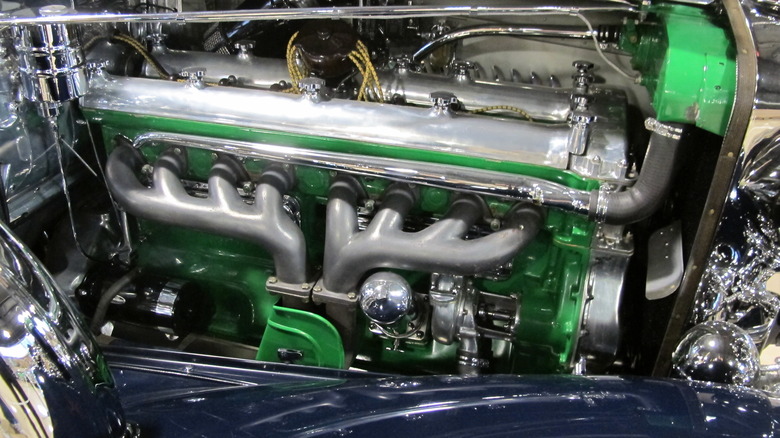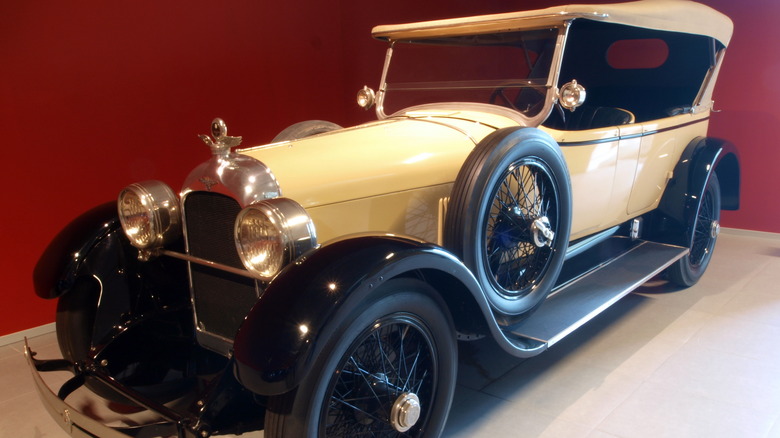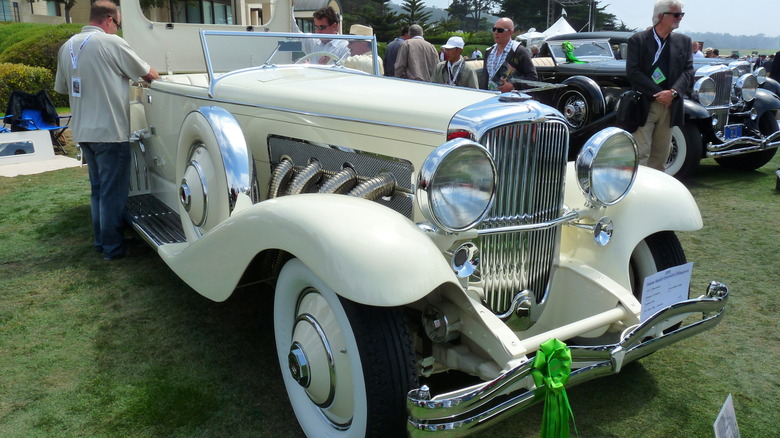Was The Duesenberg Straight-8 A Good Engine, & How Powerful Was It?
Duesenberg made some of the most luxurious and expensive cars of the pre-World War era, and a great deal of effort went into the design and construction of the massive inline eight-cylinder engine that powered the Model A, Model J, and some of Duesenberg's other marvels. Duesenberg went under in 1937, five years after co-founder Fred Duesenberg's death, but was the quality of the straight eight a factor in the demise of the company, and just how powerful was that engine?
Duesenberg's inline eight was positively dominant on the racetrack in the 1920s. "Doozies" took the top two spots at the 1922 Indianapolis 500, and Duesenberg drivers drank milk in the winner's circle again in 1924, 1925, and 1927. In April 1923, Duesenberg demonstrated the dependability of its straight-eight engine by running a Model A for 24 straight hours at Indianapolis, covering 3,155 miles at an average speed of more than 131 miles per hour. Another Model A ran alongside it for refueling when necessary, and the one that ran all those laps served as the pace car for the race the next month.
[Featured image by Larry Stevens via Wikimedia Commons|Cropped and scaled|Public Domain]
The 1921 Model A's inline eight made 88 horsepower
Duesenberg's production cars were as extravagant as its racers were successful. The Model J started at $8,500 in 1929, which equals more than $150,000 when accounting for almost a century of inflation. As should be expected for the most important component of a high-end car, the Duesenberg inline eight engine is a masterfully engineered and crafted wonder. A few years ago, antique engine expert John DeBates had a chance to do some minor work on a 1929 Duesenberg engine and raved about the build quality to Engine Builder Magazine.
"I have never seen an engine before that looked like it was a Swiss watch," he said. "The [timing] chains are like 3 inches wide. The crankshaft is completely polished and it's just a beautiful piece to work on." The Duesenberg's engine isn't a showpiece, though. When the 1921 Model A debuted with the world's first production inline eight, it displaced just under 260 cubic inches and produced 88 horsepower. That seems weak by modern standards, but it was four times as powerful as the Model T's inline four.
[Featured image by Alvfan Beem via Wikimedia Commons|Cropped and scaled|Public Domain]
The model J's straight eight made 265 horsepower
The Model J had launched near the end of the 1920s. By that time, it had a 420-inch engine that generated 265 horsepower, which was more than twice the juice of the next most powerful engine on the market and just a few horses shy of the most powerful of the 1966 Ford Mustang's engine options.
Duesenberg wasn't done, though. From 1932 through 1937, the Duesenberg SJ got a supercharged version of that engine that bumped output to about 320 horsepower. For 1935, Duesenberg's engine team pushed things even further with the SSJ. That car's engine had a cast-iron block and exhaust manifold, reinforced cylinders and crankshaft, and made 400 horsepower and 425 lb-ft of torque. But only two short-wheelbase SSJs were ever made, compared to 36 SJs and just under 500 Model Js. That makes all three models extremely valuable today.
Actor Gary Cooper's SSJ sold at auction for $22 million, and the three SJs that have changed hands in the past five years did so for an average price of $2.3 million, according to Classic.com. Duesenberg Model Js are easy to find in comparison, with 45 recorded sales over that same period at an average price of an even $2 million.
[Featured image by Craig Howell via Wikimedia Commons|Cropped and scaled|CC-By 2.0]


